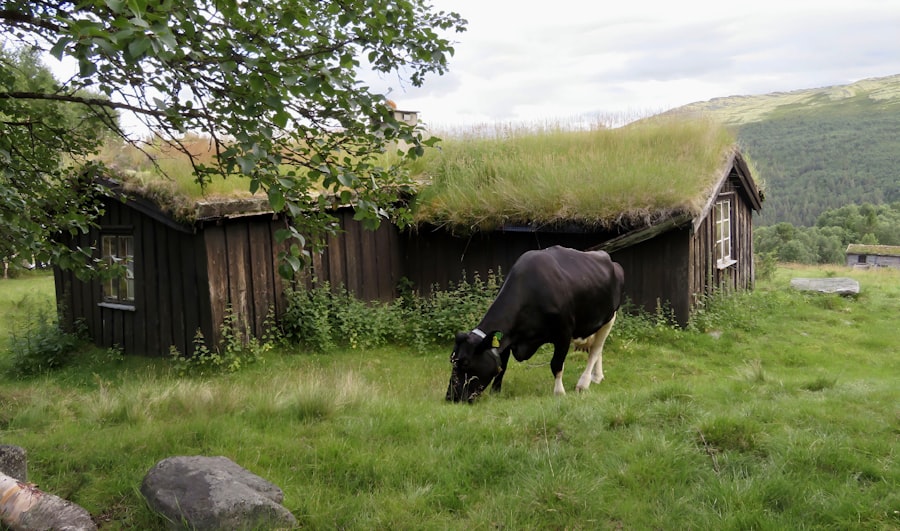For those embarking on the journey of learning Norwegian, the quest for opportunities to practice speaking is paramount. Engaging with the language in real-life situations not only enhances fluency but also deepens understanding of cultural nuances. One effective way to find such opportunities is by immersing oneself in environments where Norwegian is spoken.
This could involve visiting local Norwegian cafes, attending cultural festivals, or even participating in community events that celebrate Norwegian heritage. Each interaction provides a chance to converse with native speakers, allowing learners to apply their skills in a practical context. Moreover, technology has made it easier than ever to connect with Norwegian speakers around the globe.
Online platforms and social media groups dedicated to language exchange can be invaluable resources. By joining these communities, learners can find conversation partners who are eager to practice their English or other languages in exchange for Norwegian practice. This reciprocal arrangement not only fosters language skills but also builds friendships that can enrich the learning experience. Book Your 1-Hour Relocation Strategy Session
Summary
- Join a language exchange meetup or event to practice speaking Norwegian with native speakers
- Approach locals in a respectful and friendly manner when seeking opportunities to practice Norwegian
- Overcome language barriers and build confidence by incorporating Norwegian into everyday interactions
- Seek out Norwegian-speaking communities and groups to immerse yourself in the language and culture
- Embrace mistakes and learn from them as you progress in your Norwegian speaking skills
Approaching locals in a respectful and friendly manner
When it comes to practising Norwegian, the manner in which one approaches locals can significantly influence the outcome of the interaction. A respectful and friendly attitude is essential; it sets a positive tone and encourages openness from those you wish to engage with. Simple gestures, such as greeting someone with a warm smile and a polite “Hei” (Hello), can break the ice and create a welcoming atmosphere.
It is important to remember that many Norwegians appreciate when someone makes an effort to speak their language, even if it is not perfect. Additionally, showing genuine interest in the culture and customs of Norway can further enhance interactions. Asking questions about local traditions or expressing curiosity about everyday life can lead to more meaningful conversations.
This not only helps in practising the language but also demonstrates respect for the culture, making locals more inclined to assist in your learning journey. By fostering a friendly rapport, learners can create a supportive environment that encourages dialogue and language practice.
Overcoming language barriers and building confidence

Language barriers can often feel daunting, especially for those new to learning Norwegian. However, overcoming these obstacles is a crucial step towards building confidence in speaking. One effective strategy is to focus on communication rather than perfection.
Embracing the idea that making mistakes is a natural part of the learning process can alleviate some of the pressure associated with speaking a new language. Instead of fearing errors, learners should view them as opportunities for growth and improvement. Building confidence also involves setting realistic goals and celebrating small victories along the way.
For instance, successfully ordering a meal in Norwegian or having a brief conversation with a local can serve as significant milestones. Each achievement reinforces the learner’s ability and encourages them to take on more challenging interactions. By gradually pushing their boundaries and stepping out of their comfort zone, learners can cultivate a sense of self-assurance that will serve them well in their language journey.
Using language exchange meetups and events
Language exchange meetups and events are excellent avenues for practising Norwegian in a relaxed and social setting. These gatherings often attract individuals from diverse backgrounds who share a common goal: improving their language skills. Participating in such events allows learners to engage in conversations with both native speakers and fellow learners, creating an enriching environment for practice.
The informal nature of these meetups often alleviates the pressure associated with formal language classes, making it easier for participants to express themselves. In addition to enhancing speaking skills, these events provide an opportunity to learn about different dialects and regional variations within the Norwegian language. Engaging with various speakers exposes learners to diverse accents and colloquialisms, further enriching their understanding of the language.
Moreover, these meetups often foster friendships that extend beyond language practice, creating a supportive community that encourages continued learning.
Seeking out Norwegian-speaking communities and groups
Finding and engaging with Norwegian-speaking communities can significantly enhance one’s language learning experience. Many cities have established groups or clubs dedicated to promoting Norwegian culture and language, providing an excellent platform for practice. These communities often organise events such as film screenings, cooking classes, or cultural discussions that allow participants to immerse themselves in both the language and the culture.
Joining these groups not only facilitates language practice but also offers insights into the social dynamics and traditions of Norway. Engaging with fellow members can lead to meaningful conversations that deepen understanding of cultural contexts, idiomatic expressions, and everyday vernacular. Furthermore, being part of a community fosters accountability and motivation, as members encourage each other to continue their language learning journey.
Incorporating Norwegian into everyday interactions

Integrating Norwegian into daily life is an effective strategy for reinforcing language skills. This can be achieved through simple practices such as labelling household items with their Norwegian names or incorporating Norwegian phrases into everyday conversations. For instance, greeting family members or friends with “God morgen” (Good morning) or “Takk” (Thank you) can create an immersive environment that encourages consistent practice.
Additionally, consuming Norwegian media—such as films, music, or podcasts—can further enhance language exposure. Listening to songs or watching films in Norwegian not only improves listening skills but also familiarises learners with colloquial expressions and cultural references. By weaving the language into daily routines, learners can create a rich tapestry of linguistic experiences that reinforce their understanding and fluency over time.
Making use of language learning apps and online resources
In today’s digital age, numerous language learning apps and online resources are available to assist learners in mastering Norwegian. These tools often provide interactive exercises, vocabulary drills, and pronunciation guides that cater to various learning styles. Popular apps like Duolingo or Babbel offer structured lessons that can be accessed at any time, making it convenient for learners to practise on-the-go.
Moreover, online platforms such as YouTube or language blogs provide valuable insights into grammar rules, pronunciation tips, and cultural context. Engaging with these resources allows learners to supplement their knowledge and gain a deeper understanding of the intricacies of the Norwegian language. By leveraging technology effectively, learners can create a personalised study plan that aligns with their goals and preferences.
Seeking out language partners for regular practice
Establishing a regular practice routine with a language partner can significantly enhance one’s proficiency in Norwegian. Language partners provide an opportunity for reciprocal learning; while one person practises speaking Norwegian, the other can improve their skills in another language. This arrangement not only fosters accountability but also creates a supportive environment where both partners can learn from each other’s strengths and weaknesses.
Finding a suitable language partner can be done through various channels, including social media groups or dedicated language exchange websites. Once paired, partners can schedule regular sessions—whether in person or via video calls—to engage in conversation practice. This consistent interaction helps reinforce vocabulary retention and builds confidence in speaking abilities over time.
Embracing mistakes and learning from them
One of the most important aspects of learning any new language is embracing mistakes as part of the process. Many learners fear making errors when speaking Norwegian; however, it is essential to recognise that mistakes are valuable learning opportunities. Each misstep provides insight into areas that require improvement and helps solidify understanding of grammatical structures or vocabulary usage.
Encouraging a mindset that views mistakes positively can significantly boost confidence levels. Instead of shying away from speaking due to fear of errors, learners should approach conversations with curiosity and openness. Engaging with native speakers who are often understanding and supportive can further alleviate anxiety surrounding mistakes.
By fostering an environment where errors are seen as stepping stones rather than setbacks, learners can cultivate resilience and determination on their language journey.
Engaging in cultural activities and events
Participating in cultural activities related to Norway offers an enriching way to enhance language skills while gaining insights into the country’s traditions and customs. Many cities host events such as Norwegian film festivals, art exhibitions, or traditional food fairs that provide opportunities for immersion in both the language and culture. Attending these events allows learners to engage with native speakers in informal settings while discussing shared interests.
Moreover, cultural activities often incorporate elements of storytelling or folklore that can introduce learners to idiomatic expressions and colloquial phrases unique to the Norwegian language. By engaging with these narratives, learners not only improve their linguistic abilities but also develop a deeper appreciation for Norway’s rich cultural heritage. This holistic approach to learning fosters a connection between language and culture that enhances overall comprehension.
Celebrating progress and staying motivated
As learners navigate their journey towards mastering Norwegian, it is crucial to celebrate progress along the way. Acknowledging achievements—no matter how small—can serve as powerful motivation to continue striving for improvement. Whether it’s successfully holding a conversation with a native speaker or completing a challenging lesson on an app, recognising these milestones reinforces commitment to the learning process.
Staying motivated can also involve setting specific goals and tracking progress over time. Creating a visual representation of achievements—such as a progress chart or journal—can provide tangible evidence of growth and encourage perseverance during challenging periods. Additionally, sharing successes with friends or fellow learners fosters a sense of community support that further fuels motivation.
For those looking for tailored guidance on their journey towards fluency in Norwegian, consider scheduling a One-Hour Strategy Session with the Norway Relocation Group. This session offers personalised insights into effective learning strategies tailored specifically for your needs and goals. With expert advice at your fingertips, you’ll be well-equipped to navigate your path towards mastering the beautiful Norwegian language while embracing its rich culture along the way.

